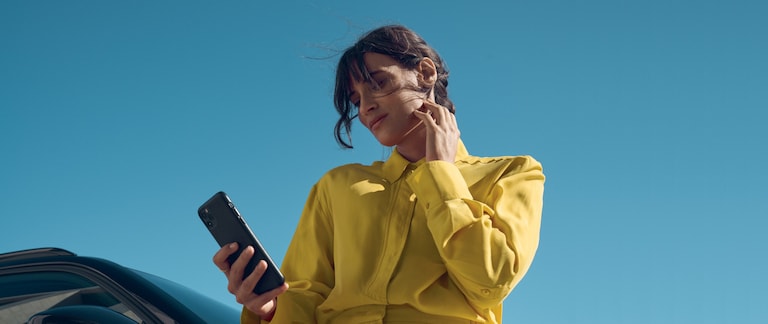
How does the recharging curve
of an electric vehicle work?
When we talk about driving an electric vehicle, charge time and range often come to mind.
Both factors impact how quickly a car can travel long distances, meaning fewer and shorter charging breaks.
During these breaks, it's best to connect your vehicle to a fast-charging station. Companies like Ionity, ENGIE or TotalEnergies offer stations with high power charging (at least 100 kW) using direct current. These stations can be found at many highway service stations and some retail outlets.
How does the recharging curve
of an electric vehicle work?
When we talk about driving an electric vehicle, charge time and range often come to mind.
Both factors impact how quickly a car can travel long distances, meaning fewer and shorter charging breaks.
During these breaks, it's best to connect your vehicle to a fast-charging station. Companies like Ionity, ENGIE or TotalEnergies offer stations with high power charging (at least 100 kW) using direct current. These stations can be found at many highway service stations and some retail outlets.
Key figures
For a better understanding, let's consider the new E-308 with 156 hp.
It has a 51 kWh battery, allowing it to cover 256 miles based on the WLTP cycle, which can be charged at up to 100 kW DC.
You'll notice when you put the compact car into a fast charger, it doesn't keep this maximum charge rate for the whole time. Why is that?
Key figures
For a better understanding, let's consider the new E-308 with 156 hp.
It has a 51 kWh battery, allowing it to cover 256 miles based on the WLTP cycle, which can be charged at up to 100 kW DC.
You'll notice when you put the compact car into a fast charger, it doesn't keep this maximum charge rate for the whole time. Why is that?
The glass of water theory
Think of this like trying to fill a water glass quickly without it overflowing. You'd pour quickly until it's three-quarters full, then slow down to avoid overfilling. The same concept applies to charging a lithium-ion battery. So, the charging curve — representing its ability to store electrical power (kW) — isn't a straight line that stays the same from start to finish.
The glass of water theory
Think of this like trying to fill a water glass quickly without it overflowing. You'd pour quickly until it's three-quarters full, then slow down to avoid overfilling. The same concept applies to charging a lithium-ion battery. So, the charging curve — representing its ability to store electrical power (kW) — isn't a straight line that stays the same from start to finish.


Get peak load from 20% to 80%
Rest assured, smart battery management software controls the charging curve (or charging speed) based on several factors. Most times, when a car arrives at a fast-charge station with a battery about 20% full, the curve initially spikes, stays steady, and then slowly drops.
When the battery is over 80% full, the curve dramatically drops and charging slows. That's why it's recommended to start driving again as soon as you hit this point to optimise your journey time.
Get peak load from 20% to 80%
Rest assured, smart battery management software controls the charging curve (or charging speed) based on several factors. Most times, when a car arrives at a fast-charge station with a battery about 20% full, the curve initially spikes, stays steady, and then slowly drops.
When the battery is over 80% full, the curve dramatically drops and charging slows. That's why it's recommended to start driving again as soon as you hit this point to optimise your journey time.
Planning is key
So, it's how well the battery can maintain its high recharging curve that decides how long you should stay at a DC charge station. For example, the new E-308's 51 kWh battery can go from 20% to 80% in 27 minutes, recovering many miles of range. As we all want to make the best of our long-distance journey times, access the Octopus Electroverse Journey Planner via the MyPeugeot App for optimised routes using the ideal fast-charge range.
Enter the world of PEUGEOT with the E-308: compact, feline, and sensational. Configure your own or book a test drive at your nearest retailer.
Planning is key
So, it's how well the battery can maintain its high recharging curve that decides how long you should stay at a DC charge station. For example, the new E-308's 51 kWh battery can go from 20% to 80% in 27 minutes, recovering many miles of range. As we all want to make the best of our long-distance journey times, access the Octopus Electroverse Journey Planner via the MyPeugeot App for optimised routes using the ideal fast-charge range.
Enter the world of PEUGEOT with the E-308: compact, feline, and sensational. Configure your own or book a test drive at your nearest retailer.
